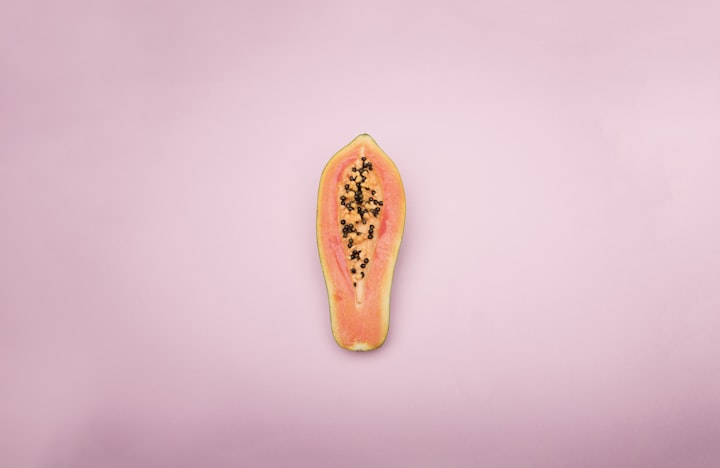Periods After Pregnancy
A quick guide to the transition after delivery

So we all know about the resources for folks both before and during the pregnancy… “What to Expect When You’re Expecting” comes to mind (the book and the movie, which surprisingly is not based on the actual contents of the book).
And I’ll be honest with you in that I give a lot of focus to birthing parents in the pre-conception stage, helping them learn more about their cycles to either prevent or plan a pregnancy. I’m still very much focused in this area.
But I find it really interesting that there isn’t a large amount of information available to support new parents in figuring out what happens to their period after pregnancy is over. They may very well be out there, but I don’t know that I’m familiar with many of them. Side note: if you know some, please send them my way!
Being a new parent comes with lots of other overwhelming stuff – diaper changes, doctor’s appointments, vaccination schedules, introducing baby to family and friends. Figuring out what the deal is with your period shouldn’t be an added stress.
Let’s start with some more obvious things – what exactly happens to a period during pregnancy?
The uterine lining is held in place by progesterone, first produced by the corpus luteum after ovulation and then eventually by the placenta when successful fertilization and implantation occurs. This transition typically takes place around the 12 week mark in pregnancy, when the brain and reproductive system are communicating in their feedback loop that there’s a new tissue growing in there!
The uterine lining is used during pregnancy to protect and nourish a fetus – its destruction wouldn’t be beneficial so it remains in place. Many blood pathways develop between the placenta and the birthing parents bloodstream to send nourishment and oxygen to the fetus, and remove waste and carbon dioxide. After delivery, the placenta detaches from the uterus – it’s not needed anymore because there isn’t a fetus in there! Along with all of the other significant hormonal shifts during pregnancy, progesterone drops and helps to contribute to postpartum bleeding.
While uncomfortable this process is normal and allows the uterus to return to its normal size after pregnancy… it’s called lochia and lasts about 6 to 8 weeks!
However, this process is not a period… and here’s why:
During pregnancy, the body amps up its production of prolactin, a hormone made in the pituitary gland to grow and develop breast tissue for milk production. All bodies normally make small amounts and these interact with other factors such as dopamine. High prolactin levels suppress ovulation – if the body is trying to make milk, that likely means there is an active pregnancy or a new baby to feed, and theoretically a new pregnancy would deplete resources needed. When periods go missing, prolactin is one element assessed in bloodwork as it may indicate issues with the pituitary gland preventing regular ovulation and regular periods as a result.
For folks who breast or chestfeed following delivery, this prolactin continues to function to promote milk production and as a result suppress ovulation. No new ovum is released and so no new period begins. Some individuals do not have a period for the duration of the time that they breastfeed, but some may have a return of menses if their feeding frequency drops. Menstruation may change the quality and quantity of milk – production may dip slightly and baby may be fussy with a change in taste!
Periods may be irregular with longer cycles and heavier bleeding with more clotting, while other individuals may note more comfortable periods because of uterine muscles stretching. If there were hormonal issues prior to pregnancy, it’s possible these may flare again without management, such as PCOS. Folks with endometriosis may note a short-term reduction in symptoms but this usually doesn’t last.
For folks who don’t breast or chest feed, this prolactin gradually reduces and periods return sooner. They may vary in quality similar to those above!
You ovulate before you menstruate, and this is why providers recommend birth control options during the postpartum period – if you’re not aware of your cycle and are back to having sex, you may become pregnant unintentionally! It’s recommended to allow for 18 to 24 months between pregnancies to support birthing parents in returning to a fuller nutrition and health status and optimize next pregnancy outcomes (but this doesn’t mean all back-to-back pregnancies are unsafe or unhealthy – talk to your health care provider about your family planning goals).
Knowing what to expect after delivery can soothe worries about body changes that are normal, and make you aware of those that aren’t. You deserve all of the information to make informed choices!
If you liked this post, send a tip! It supports my research and writing in menstrual health and fertility nutrition. And visit me at sayyestonourish.com to learn more about me!
About the Creator
Emily the Period RD
I help people with periods navigate menstrual health education & wellness with a healthy serving of sass (and not an ounce of nutrition pseudoscience).






Comments
There are no comments for this story
Be the first to respond and start the conversation.